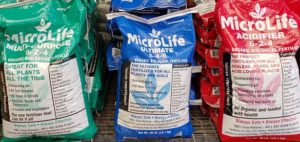Vegetables: Vegetable planting is still going on-just be sure to water new seedlings well and often! Don’t let them dry out while they are germinating and getting their “true” leaves, as moisture is critical at this stage.
Fall vegetable gardening in many ways can be better than a spring garden in Central Texas. Believe it or not, we plant tomato plants for “fall” tomatoes in July! We suggest choosing either a “determinate” type tomato (see info sheet), or a variety that has 60-70 “days to harvest”. I have also grown some 80-90 “days to harvest” varieties such as Cherokee Purple, and if we don’t have an early winter, they will produce nicely. Since we never know when we will have a freeze, you might combine several varieties for fall! Many vegetables such as broccoli and cauliflower seem to do best in the fall. (We plant these around September 15 from transplants). Almost all the spring crops, except perhaps sweet corn, will do better in the cooler days of fall. (See “Planting Guide for Central Texas” for planting times)
Pumpkin seeds may be planted early to mid-month. Mid to late-month, seeds from Okra, Southern Pea and Winter Squash may be planted. Plant transplants of Eggplant, Tomatoes and Peppers mid-month for a fall harvest.

If it has not rained an inch or more in the week prior to seeding, set the sprinkler in the garden to soak the soil well a couple of days before planting. Providing afternoon shade to the young seedlings using make-shift cardboard structures, row cover or even umbrellas, will often give better results with germination and seedling production. Planting seeds slightly deeper and providing a layer of mulch or compost to retain moisture is helpful as well.
Roses: Roses could use dead-heading and fertilizing this month for blooms to continue throughout the summer. Use Maestro Grow Rose Glo organic fertilizer for best results without “fertilizer burn”.
Fruit Trees: Fertilize young fruit trees (except pear) with MicroLife organic fertilizer for Fruit and Citrus.
Lawns: Water lawns to a depth of 6”. Set mower higher in shady areas to promote dense turf.
Shrubs and Trees: Mulch bare soil in beds to conserve moisture. Pull mulch 3” away from trunks to prevent damage to the vascular system. Water deeply to encourage deep root systems. Fertilize shrubs and trees with an organic fertilizer such as MicroLife 6-2-4, including Crape Myrtles, which are blooming heavily right now, and could use the extra nutrients.

Annuals: Outdoor container plants need daily watering. Remove saucers from beneath pots and water over and over again, until soil is well saturated. Blooming plants will benefit from an application of fertilizer. Be sure to water the plant the night before you fertilize if using non-organic nitrogen to avoid root burn. I like to use NutriStar ‘ColorStar’ time-release fertilizer for my flowering plants. Water it in after application.
Watch for caterpillars chewing holes in Sweet Potato Vine, Bougainvillea and defoliating Vinca major ground cover. Spray weekly with Bt or Spinosad if caterpillars are a problem.
Perennials: Watch for Lacebug damage on Lantanas. The leaves will appear “bleached-out” and there will be black specks on the back of the leaves. Damage usually appears in July and August. Cut these plants back pretty hard, fertilize them, and when new growth appears, protect the new foliage by spraying with a product labeled for lacebugs. Please consult nursery staff for recommendations.
